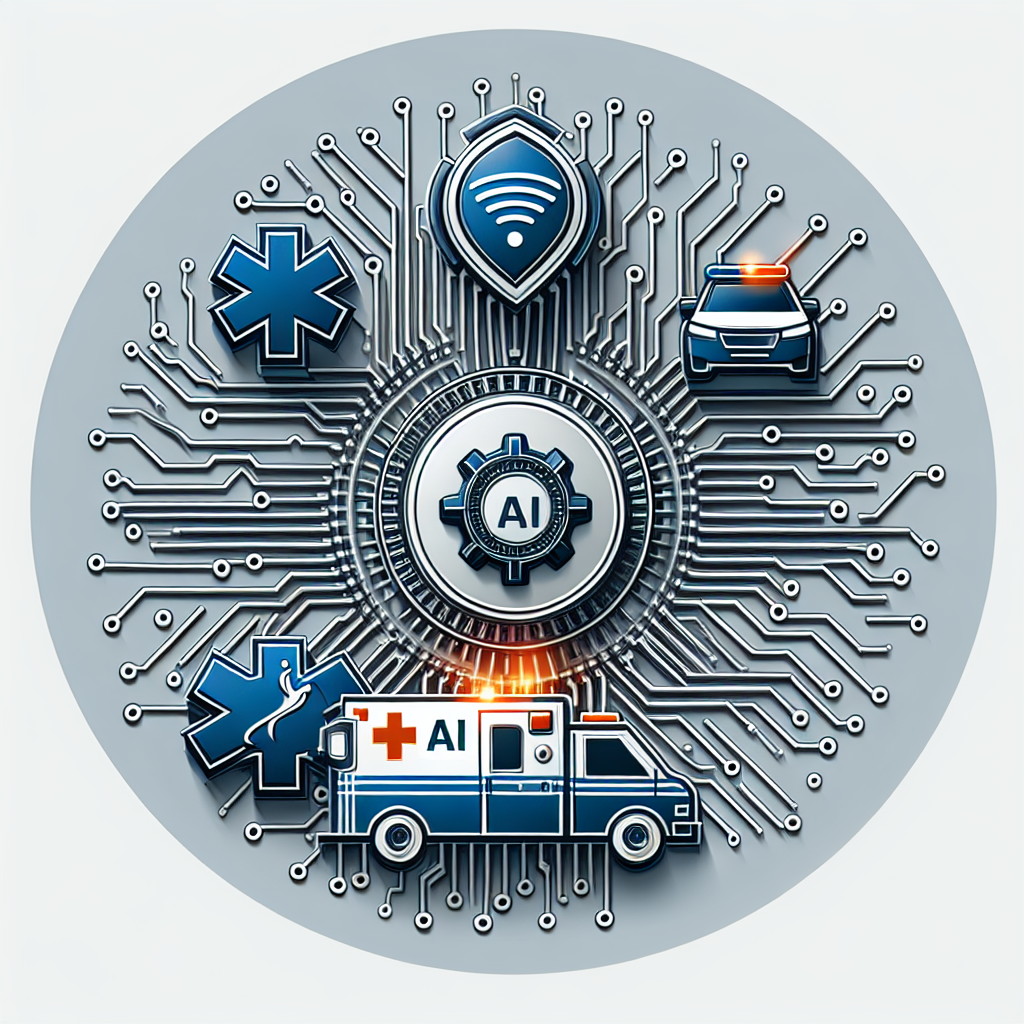AI and Public Safety: Improving Emergency Services and Response Times
In recent years, artificial intelligence (AI) has emerged as a powerful tool in improving public safety and emergency response services. From predicting crime patterns to optimizing emergency dispatch systems, AI has the potential to revolutionize the way we handle emergencies and keep our communities safe. In this article, we will explore the various ways in which AI is being used to enhance public safety and improve response times in emergency situations.
Predictive Policing
One of the most promising applications of AI in public safety is predictive policing. By analyzing vast amounts of data, AI algorithms can identify patterns and trends in criminal activity, allowing law enforcement agencies to allocate resources more effectively and prevent crimes before they occur. For example, AI-powered software can analyze historical crime data to predict where and when crimes are most likely to happen, enabling police departments to deploy officers to high-risk areas proactively.
In addition to predicting crime patterns, AI can also help law enforcement agencies identify individuals who are at a higher risk of committing crimes in the future. By analyzing factors such as past criminal behavior, social and economic status, and mental health history, AI algorithms can generate risk scores for individuals and help law enforcement agencies prioritize their resources accordingly.
Emergency Dispatch Optimization
Another area where AI is making a significant impact on public safety is in emergency dispatch systems. Traditional dispatch systems rely on human operators to field emergency calls, gather information, and dispatch first responders to the scene. However, these manual processes can be time-consuming and error-prone, leading to delays in response times and potentially putting lives at risk.
AI-powered dispatch systems, on the other hand, can automate many of these tasks, streamlining the emergency response process and improving efficiency. By using natural language processing and machine learning algorithms, AI dispatch systems can quickly analyze incoming calls, extract relevant information, and dispatch the closest and most appropriate first responders to the scene. This not only reduces response times but also ensures that the right resources are deployed to handle each emergency situation effectively.
Fire and Rescue Operations
AI is also being used to enhance fire and rescue operations, improving the safety and effectiveness of first responders in emergency situations. For example, AI-powered drones equipped with thermal imaging cameras can be deployed to survey fire scenes and identify hot spots, helping firefighters locate and extinguish fires more quickly. AI algorithms can also analyze building layouts and fire dynamics to predict how a fire is likely to spread, allowing firefighters to develop more effective strategies for containment and rescue operations.
In addition to improving response times, AI can also help first responders stay safe in hazardous environments. For example, AI-powered sensors can be deployed in buildings to monitor air quality, temperature, and other environmental factors, alerting firefighters to potential dangers and guiding them to safety. AI-powered robots can also be used to perform tasks such as search and rescue operations in dangerous or hard-to-reach areas, reducing the risk to human responders.
FAQs
Q: How does AI improve emergency response times?
A: AI can improve emergency response times by automating tasks such as call analysis, information extraction, and resource allocation, allowing first responders to be dispatched more quickly and effectively. AI algorithms can also predict where and when emergencies are likely to occur, enabling agencies to proactively deploy resources to high-risk areas.
Q: Is AI used in all emergency services?
A: While AI is being increasingly used in emergency services such as law enforcement, fire and rescue, and emergency medical services, its adoption is not yet universal. Some agencies may still rely on traditional methods for handling emergencies, but the trend is towards greater integration of AI technologies to improve public safety and response times.
Q: What are the potential drawbacks of using AI in public safety?
A: One potential drawback of using AI in public safety is the risk of bias in algorithms, which can lead to unfair or discriminatory outcomes. It is important for agencies to carefully monitor and evaluate the performance of AI systems to ensure that they are making accurate and impartial decisions. Additionally, there may be concerns about privacy and data security when using AI to analyze sensitive information related to emergency situations.
Q: What are some examples of AI technologies used in public safety?
A: Some examples of AI technologies used in public safety include predictive policing software, AI-powered emergency dispatch systems, drones equipped with thermal imaging cameras for fire and rescue operations, and AI-powered sensors for monitoring environmental conditions in hazardous situations. These technologies are helping to improve the effectiveness and efficiency of emergency response services and keep our communities safe.
In conclusion, AI has the potential to revolutionize public safety and emergency response services by improving response times, optimizing resource allocation, and enhancing the safety of first responders. By harnessing the power of AI technologies, we can better predict and prevent emergencies, respond more quickly and effectively to crisis situations, and ultimately save lives. As AI continues to advance and evolve, we can expect to see even greater innovations in public safety and emergency services, making our communities safer and more resilient in the face of emergencies.

